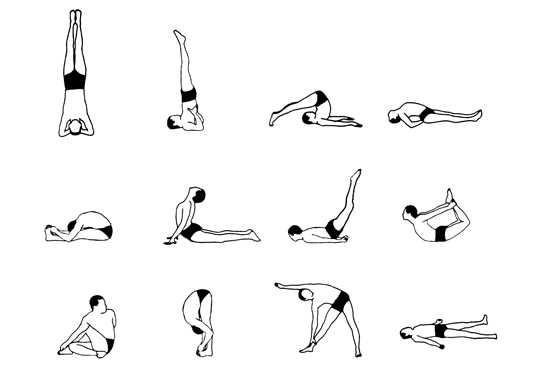YOGA & ASANAS
YOGA:
Yoga is as old as civilization. Early Upanishads, the Bhagavadgita and the Yoga Sutras of Patanjali are universally accepted as constituting the verbal foundation of the yoga tradition. Among these, Yoga Sutras provides the basis and inspiration for most of today's tradition of yoga.
In Sanskrit, Yoga means 'to unite'. Primarily an exercise is moral and mental cultivation of poses and practices that aim towards harmonising your mind, body, and soul to achieve a state of oneness with the universe. Its a spiritual practice that does not subscribe nor promote any particular faith; hence it can be practiced by all. A lifestyle choice by many, the universally timeless philosophies of yoga can be incorporated into any belief system. Stress, anxiety, ill-health, unhappiness and anger can be transformed into peacefulness, vibrant health, service and love towards all creation. The techniques are important in this process but the goal should be kept firmly in mind. The three main aspects of yoga are:
- Asanas or Poses
- Pranayama or Breathing
- Meditation
Regular practice of yoga helps in cultivating a strict discipline in food habits, cleanliness, sex and character, thus enabling one to become a better person. The therapeutic use of yoga is widely known. In fact, today, yoga is considered a global phenomenon and an essential part of modern civilisation. However, yoga, when practiced in wrong manner, and without professional guidance, can do more harm then good.
Equally important are the proper time, place, and the right diet. Yoga has to be practiced in a quite, secluded place, where fresh air is easily available - like a verandah, terrace, garden, etc. Ideally, yoga should be practiced in the early hours of either morning or evening on a relatively empty stomach.
However, it can be practiced after few hours of a heavy meal, or after 20 minutes of having a glass of juice or a cup of skimmed milk. On completion, one can have a meal after half-an-hour. Avoid tea, coffee, smoking, alcohol and spices. The duration of practice should be also fixed according to one's capacity. Most importantly, yoga should be practiced at a fixed time everyday; in two sessions if one feels able. One may feel an initial stiffness of the limbs and muscles. This will ease with regular practice. During yoga, the attire has to be clean, light, and loose fitting to allow free movement; preferably light cotton garments.
In cold climate, a shirt or thin sweater can also be used. To avoid discomfort, jewelry or accessories need to be taken of. One must always practice barefoot to ensure contact with the ground. Further, since the body has to be stretched in various directions, yogic practice has to be done on a clean mat, rug, carpet or a blanket. The seat should be firm and comfortable.
During Yogasana, one should breathe through the nostrils and not through the mouth, except in the case of Sheetali and Sheetakari pranayama. While bathing is not directly related to Yogasana, a shower before and after Yogasana can refresh the body and mind.
EIGHT LIMBS OF YOGA
Compiled by Maharishi Patanjali in the Yoga Sutras, the Eight Limbs of Yoga are a progressive series of steps or disciplines which purify the body and mind, ultimately leading the yogi (one who practices yoga) to enlightenment. While the physical part of yoga is certainly of significance, it is only one of the Eight conventional limbs of yoga practice, all of which have meditation of god as their rationale. These are the eight limbs of the complete yoga system as they are found in the famous Yoga Sutras of Patanjali.
YAMA : Moral observance for interactions with others.
NIYAMA : Moral observance for interactions with yourself.
ASANA : Postures.
PRANAYAMA : Breathing.
PRATYAHARA : Sensory Inhibition.
DHARANA : Focus.
DHYANA : Meditation.
SAMADHI : Blissful absorption of one's individual consciousness in the essence of God.
ASANAS:
Asanas is one of the Eight Limbs of Yoga. Asana means staying or Abiding. It is through asanas that an individual achieves the unity of body and mind. The Sanskrit word asana means 'to sit' or 'to be present', and, in context of the yoga tradition, means 'to be established in a particular posture.'
